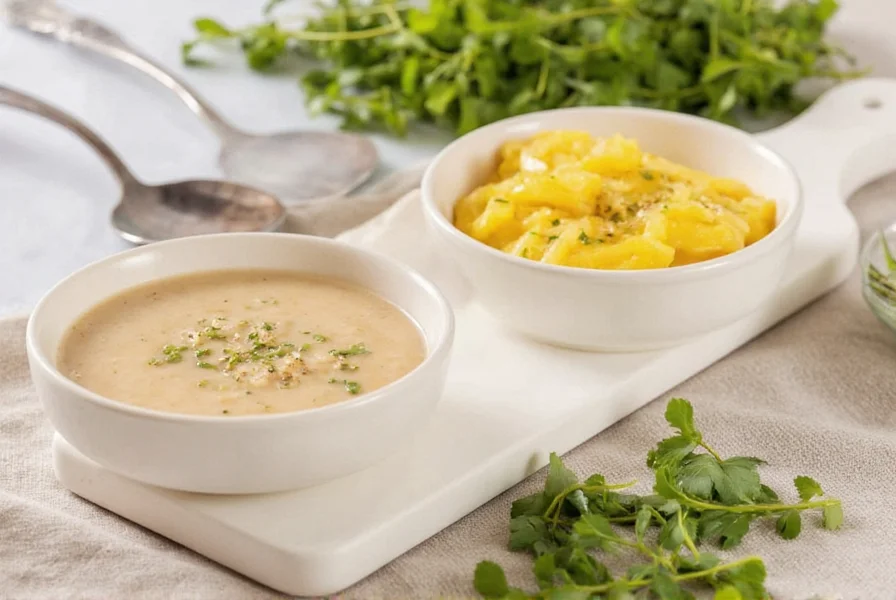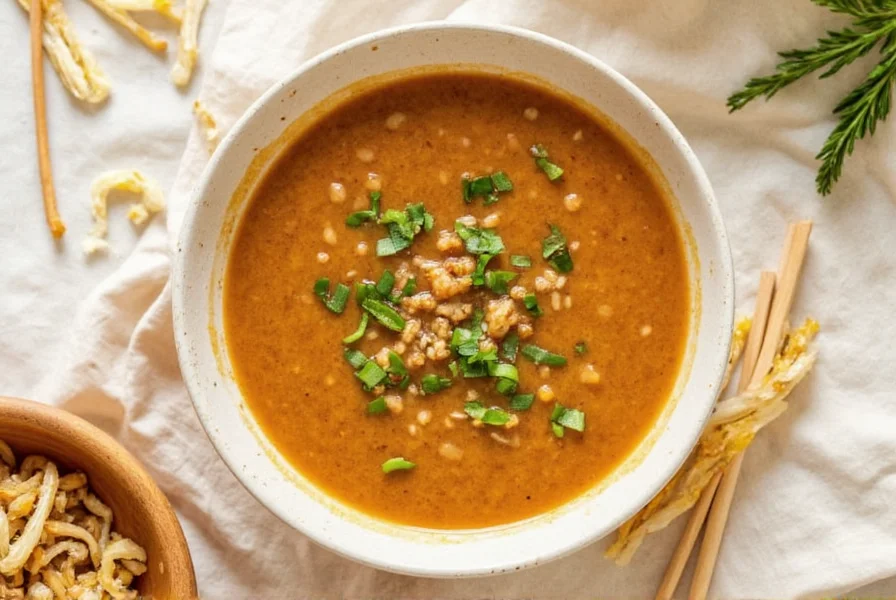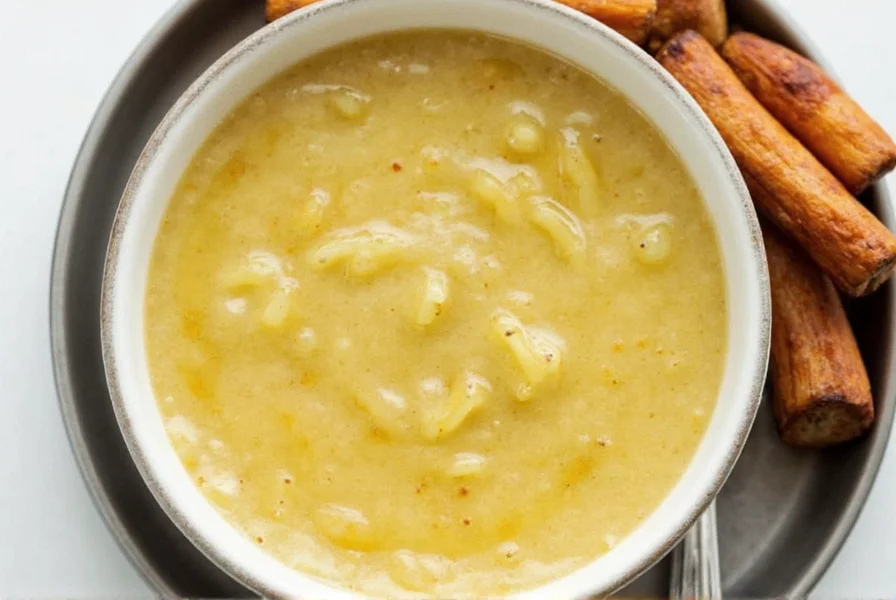Creating the perfect ginger spring onion sauce requires understanding the delicate balance between fresh ingredients and proper technique. This essential condiment, known as jiang cong you in Chinese cuisine, serves as both a finishing sauce and cooking base that elevates simple dishes with minimal effort.
Essential Ingredients and Their Roles
The magic of ginger spring onion sauce lies in its simplicity. Three core components form the foundation of this culinary staple:
| Ingredient | Function | Recommended Ratio |
|---|---|---|
| Fresh ginger | Provides sharp, warming flavor and aromatic compounds | 1 part |
| Spring onions (scallions) | Contributes fresh onion flavor and visual appeal | 2 parts |
| Neutral oil | Extracts flavors and creates emulsion | 3 parts |
Professional chefs emphasize using young ginger with smooth skin for optimal flavor without excessive heat. The white and light green portions of spring onions provide the best texture and balanced flavor, while the darker green sections can add bitterness when heated.
Step-by-Step Preparation Method
Follow these precise steps to create authentic ginger spring onion sauce that delivers restaurant-quality results:
- Peel and finely mince 2 ounces of fresh ginger using a sharp knife (avoid grating, which releases too much fiber)
- Separate spring onions: use 4 ounces of white and light green portions, thinly sliced on a diagonal
- Combine ingredients in a heatproof bowl that's slightly larger than needed
- Heat 6 ounces of neutral oil (like peanut or canola) to 350°F (175°C)
- Pour ⅓ of the hot oil over the ingredients while whisking vigorously
- Wait 30 seconds, then add another ⅓ of the oil with continued whisking
- Add remaining oil while whisking to create a stable emulsion
- Cool to room temperature before using or storing
This gradual oil incorporation technique prevents the ginger from burning while maximizing flavor extraction. The slight temperature pauses between oil additions allow the aromatics to properly infuse without scorching.
Variations for Different Culinary Applications
While the basic formula remains consistent, professional kitchens adapt ginger spring onion sauce for specific dishes:
- Seafood enhancement: Add 1 teaspoon of Shaoxing wine and ½ teaspoon of fine sea salt to complement fish and shellfish
- Vegan adaptation: Substitute sesame oil for 25% of the neutral oil to deepen flavor without animal products
- Spicy version: Incorporate 1 finely minced red chili pepper for heat that complements the ginger's warmth
- Restaurant-style: Professional chefs often add a small amount of chicken or vegetable stock (1-2 tablespoons per cup of sauce) for enhanced body
Understanding these variations transforms your homemade ginger spring onion sauce from a simple condiment into a versatile culinary tool that adapts to different proteins and cooking methods.
Storage Guidelines and Shelf Life
Proper storage maintains both safety and flavor integrity of your ginger spring onion sauce:
- Refrigerate in an airtight container for up to 10 days
- Freeze in ice cube trays then transfer to freezer bags for up to 3 months
- Always use clean utensils when handling to prevent bacterial contamination
- Discard if you notice any off odors, mold, or separation that doesn't reincorporate with stirring
The high oil content naturally preserves the sauce, but the fresh ingredients mean it won't last as long as commercially preserved condiments. For best results, prepare small batches that you'll use within a week.
Perfect Pairings and Serving Suggestions
Ginger spring onion sauce shines when paired thoughtfully with complementary dishes:
- Steamed fish: Drizzle generously over whole fish just before serving
- Dumplings: Use as a dipping sauce alternative to vinegar-based options
- Rice dishes: Mix with steamed rice for instant flavor enhancement
- Roasted vegetables: Toss with roasted asparagus or bok choy
- Noodle dishes: Stir into cold sesame noodles for added dimension
Chefs recommend adding the sauce at the final stage of cooking or as a finishing touch to preserve its fresh, vibrant flavor profile. When used as a cooking base, add it during the last minute of stir-frying to maintain its aromatic qualities.
Troubleshooting Common Issues
Even experienced cooks encounter challenges with ginger spring onion sauce. Here's how to address frequent problems:
- Bitter taste: Caused by overheating oil or using dark green spring onion portions. Solution: Use oil at proper temperature (350°F) and only white/light green scallion sections
- Separation: Indicates improper emulsification. Solution: Whisk vigorously while adding oil in three stages with 30-second intervals
- Weak flavor: Results from insufficient ginger or improper oil temperature. Solution: Use fresh, young ginger and ensure oil is hot enough to sizzle when added
- Burnt aroma: Occurs when oil is too hot. Solution: Cool oil slightly before pouring or use a thermometer to verify temperature
Mastering these troubleshooting techniques ensures consistently excellent results with your homemade ginger spring onion sauce every time.
Advanced Techniques for Culinary Professionals
For those seeking to elevate their ginger spring onion sauce beyond basic preparation, consider these professional techniques:
- Double-infusion method: Heat oil with additional aromatics (star anise, Sichuan peppercorns) first, strain, then use this flavored oil for the sauce
- Texture variation: Reserve some ginger and spring onions unchopped for garnish, creating textural contrast
- Temperature control: Professional kitchens often cool the finished sauce to 140°F before bottling to maintain optimal flavor release
- Flavor layering: Add a small amount of fermented black beans or preserved radish for umami depth in restaurant-style preparations
These advanced methods transform the simple sauce into a sophisticated culinary component worthy of professional kitchens while remaining accessible for home cooks.

Whether you're preparing a quick weeknight dinner or crafting an elaborate feast, ginger spring onion sauce offers remarkable versatility. Its bright, clean flavor profile complements a wide range of proteins and vegetables without overwhelming delicate ingredients. By mastering this fundamental sauce, you gain access to authentic Chinese culinary techniques that transform ordinary meals into extraordinary dining experiences.
Remember that the quality of your ingredients directly impacts the final result. Seek out the freshest ginger and spring onions available, preferably from Asian markets where these ingredients are rotated frequently. The effort invested in sourcing quality components pays dividends in the vibrant flavor of your finished sauce.
Can I use dried ginger instead of fresh in ginger spring onion sauce?
No, dried ginger cannot substitute for fresh ginger in authentic ginger spring onion sauce. Fresh ginger contains volatile oils and enzymes that create the signature bright flavor, which dried ginger lacks. The texture and aromatic compounds differ significantly, resulting in an inferior sauce.
What's the best oil temperature for making ginger spring onion sauce?
The optimal oil temperature is 350°F (175°C). This temperature is hot enough to extract maximum flavor from the ginger and spring onions without burning them. Use a kitchen thermometer for accuracy, as oil that's too hot will scorch the aromatics while oil that's too cool won't properly infuse the flavors.
How can I make ginger spring onion sauce without a strong raw ginger taste?
To reduce the raw ginger bite, try blanching the minced ginger in boiling water for 30 seconds before using. Alternatively, some chefs recommend letting the finished sauce rest at room temperature for 2 hours before refrigerating, which allows the flavors to mellow and integrate more fully.
Is ginger spring onion sauce the same as scallion ginger oil?
Yes, ginger spring onion sauce is commonly referred to as scallion ginger oil in Western culinary contexts. The terms are used interchangeably, though traditional Chinese preparations may have subtle regional variations in ingredient ratios or additional components like Shaoxing wine or sesame oil.
Can I add garlic to traditional ginger spring onion sauce?
While traditional recipes don't include garlic, many modern variations incorporate 1-2 minced garlic cloves per cup of sauce. If adding garlic, introduce it after the ginger and spring onions have been partially infused, as garlic burns more easily and requires slightly lower temperatures for optimal flavor extraction.












 浙公网安备
33010002000092号
浙公网安备
33010002000092号 浙B2-20120091-4
浙B2-20120091-4